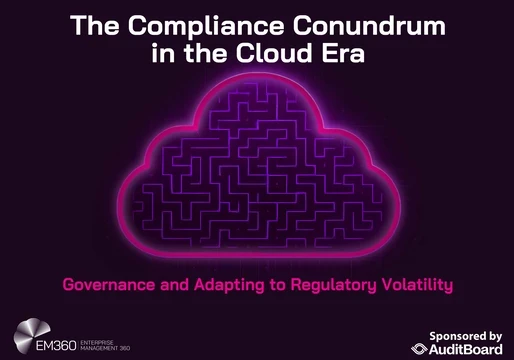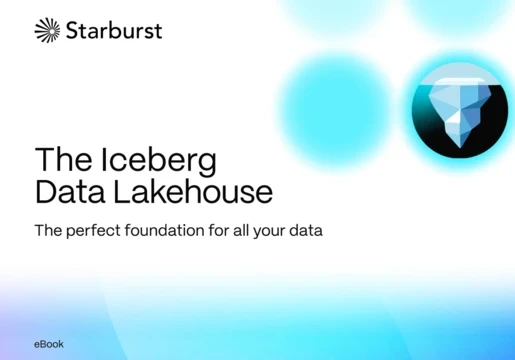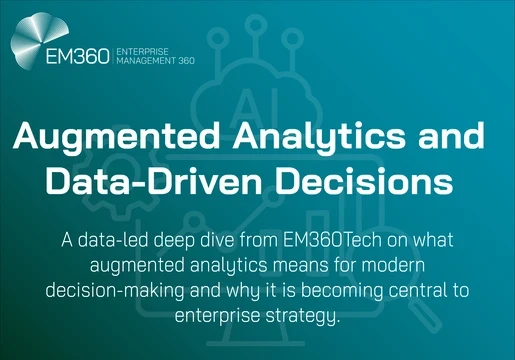Enterprise digital transformation has reached an inflection point. Organizations are moving beyond disconnected technology implementations to develop integrated digital ecosystems that drive measurable business outcomes. This evolution represents a fundamental shift in how businesses approach digital capabilities—from viewing them as separate technical specialties to understanding them as interconnected components of comprehensive business strategy.
For enterprise technology leaders, this transition creates both opportunities and challenges. The potential for strategic advantage through digital excellence has never been greater, but realizing this potential requires new approaches to digital integration, implementation, and measurement.

The Strategic Digital Services Framework for Enterprise Success
Forward-thinking organizations are implementing integrated digital approaches that span multiple capabilities, recognizing that the greatest competitive advantage comes not from excellence in any single discipline but from effective orchestration across all digital functions. This integrated framework encompasses several critical elements:
AI Implementation: From Experimental Technology to Strategic Capability
Artificial intelligence has rapidly evolved from speculative initiative to practical business capability, with enterprise applications extending far beyond chatbots and automation:
Data-Driven Decision Support
Enterprise AI now provides sophisticated decision support capabilities—analyzing complex data sets, identifying patterns human analysts might miss, and generating actionable insights that inform strategic choices. These systems don't replace executive judgment but enhance it by providing deeper, more comprehensive information analysis.
Customer Experience Personalization
Advanced implementations enable personalization at scale—creating individualized digital experiences based on user behavior, preferences, and needs without requiring manual intervention. These capabilities transform static digital properties into dynamic environments that adapt to each user.
Process Enhancement
Strategic AI implementation focuses on augmenting human capabilities rather than replacing them—handling routine aspects of complex processes while enabling team members to focus on tasks requiring judgment, creativity, and relationship management.
Operational Intelligence
Enterprise-grade AI provides continuous operational insights—identifying efficiency opportunities, predicting potential issues before they impact performance, and recommending specific optimizations based on comprehensive data analysis.
"The organizations achieving the greatest AI impact aren't those pursuing the most advanced technologies," explains Ciaran Connolly, a digital transformation specialist. "They're the ones that have clearly identified specific business challenges where AI can deliver measurable value and implemented focused solutions that integrate seamlessly with existing workflows rather than disrupting them."
Strategic Video Development: Visual Communication for Complex Enterprises
Video has similarly transformed from marketing asset to essential business communication tool with applications throughout the enterprise:
Executive Communication
Strategic video enables more effective leadership messaging—allowing executives to communicate complex strategies, organizational changes, or market responses with greater clarity and emotional impact than text-based approaches alone.
Knowledge Transfer
Enterprise-focused video facilitates more efficient knowledge sharing—capturing specialized expertise, complex processes, or institutional history in formats that enhance understanding and retention compared to written documentation.
Sales Enablement
Advanced video strategies provide powerful sales support—developing specific assets that address common prospect questions, demonstrate complex products, or illustrate implementation success stories in ways that text cannot match.
Stakeholder Education
Strategic video simplifies complex propositions for diverse stakeholders—translating technical capabilities, process improvements, or strategic initiatives into accessible visual explanations for board members, investors, partners, and other audiences.
Training Enhancement
Enterprise-grade video training transforms skill development—reducing learning time by 40-60% compared to text-based approaches while improving retention by making complex procedures visually accessible.
These applications extend far beyond traditional marketing uses to support core business functions throughout the organization. The most effective implementations integrate video strategically within broader communication and operational processes rather than treating it as a separate creative function.
Web Development: Strategic Digital Infrastructure
Website development for enterprise organizations has evolved from periodic redesign projects to ongoing strategic capability development:
Digital Experience Platforms
Advanced enterprise web development now focuses on creating comprehensive digital experience platforms rather than standalone websites—building extensible environments that integrate multiple capabilities including content management, personalization, analytics, marketing automation, and e-commerce.
Performance Optimization
Strategic web development prioritizes technical excellence—implementing sophisticated performance optimization that ensures fast loading, responsive interaction, and seamless experiences across all devices and connection speeds.
Accessibility Implementation
Enterprise-grade development includes comprehensive accessibility integration—ensuring all users can effectively engage regardless of ability and protecting organizations from potential legal issues associated with non-compliance.
Conversion Architecture
Advanced approaches employ evidence-based conversion architecture—creating user journeys specifically engineered to transform visitors into customers, partners, or other stakeholders through research-driven design patterns.
Integration Capability
Strategic web development establishes flexible integration frameworks—enabling connections with CRM systems, marketing platforms, analytics tools, and other enterprise technologies to create cohesive digital ecosystems.
These capabilities transform enterprise websites from static information repositories to dynamic business platforms that directly drive organizational objectives while providing the flexibility to evolve as requirements change.
Search Optimization: Strategic Visibility for Enterprise Value
Search engine optimization has similarly evolved from technical specialty to business development function:
Intent-Focused Strategy
Enterprise SEO now emphasizes understanding and addressing the specific intent behind relevant searches—creating content that provides comprehensive answers to prospect and customer questions rather than simply targeting keywords.
Authority Development
Strategic approaches focus on establishing genuine subject matter authority—creating in-depth resources that demonstrate expertise rather than surface-level content that fails to differentiate the organization from competitors.
Technical Excellence
Advanced enterprise SEO includes comprehensive technical implementation—ensuring search engines can effectively crawl, index, and understand all digital content through proper site structure, schema markup, and performance optimization.
Competitive Intelligence
Sophisticated SEO provides valuable market insights—identifying emerging customer needs, competitive positioning shifts, and potential opportunities through analysis of search patterns and content performance.
Local and International Optimization
Enterprise-grade SEO addresses both local and global requirements—implementing strategies that enhance visibility in specific geographic markets while maintaining overall brand consistency across international operations.
These capabilities extend SEO beyond traditional marketing functions to inform product development, strategic planning, and customer experience optimization—making it a valuable business intelligence tool rather than simply a traffic generation tactic.
Animation Development: Visual Explanation for Complex Propositions
Animation has emerged as a particularly powerful tool for enterprises communicating complex products, services, or concepts:
Process Visualization
Strategic animation translates complicated workflows or methodologies into clear visual sequences—making abstract processes concrete and understandable for both internal and external audiences.
Data Storytelling
Advanced animation transforms complex data into compelling narratives—converting statistics, trends, and relationships into visual stories that create emotional impact while maintaining analytical integrity.
Technical Concept Explanation
Enterprise-grade animation simplifies sophisticated technical concepts—using visual metaphors and simplified representations to make complex products or services understandable to non-technical audiences.
Scenario Modeling
Strategic animation illustrates potential scenarios or outcomes—showing how solutions might address future challenges or opportunities in ways that static content cannot convey.
These capabilities are particularly valuable for organizations with complex value propositions that are difficult to demonstrate through traditional means—creating understanding and engagement that drive better business decisions and stronger stakeholder relationships.
Content Strategy: From Publication to Business Impact
Content development has transformed from creative exercise to strategic business function:
Journey-Aligned Development
Enterprise content strategy creates specific resources for each customer journey stage—addressing awareness-level questions with foundational content while providing detailed technical information for consideration-stage evaluation and implementation guidance for existing customers.
Multi-Format Integration
Strategic approaches leverage different content formats for different purposes—using long-form articles to establish expertise, video to explain complex concepts, interactive tools to drive engagement, and downloadable resources to capture leads.
Expertise Demonstration
Advanced content focuses on showcasing genuine knowledge and insight—providing substantially greater depth than competitor content to establish clear authority and differentiation in crowded markets.
Performance Measurement
Enterprise-grade content strategy includes comprehensive analytics—tracking not just engagement metrics but conversion impact, sales influence, and revenue contribution to demonstrate clear business value.
These capabilities transform content from general marketing material to strategic business assets that directly influence purchasing decisions, strengthen customer relationships, and establish market leadership.
Integration Architecture: The Key to Digital Transformation Success
While each digital capability provides value independently, the greatest competitive advantage comes from effective integration—creating cohesive digital ecosystems where each element enhances the others. This integration operates across several critical dimensions:
Data Integration Framework
Effective digital transformation begins with comprehensive data integration:
Unified Customer Profiles
Advanced implementations create single customer views across all digital touchpoints—combining website behavior, content engagement, video interaction, and other signals to develop comprehensive understanding that enables more effective personalization and targeting.
Cross-Channel Attribution
Strategic approaches implement sophisticated attribution models—tracking how different digital assets and channels influence conversion across complex B2B buying journeys that may span months and involve multiple stakeholders.
Performance Consolidation
Enterprise-grade systems consolidate performance data from all digital functions—creating unified dashboards that show how different elements collectively drive business outcomes rather than reporting each capability separately.
Insight Distribution
Effective integration includes systematic processes for sharing digital insights across departments—ensuring information gathered through digital channels informs product development, customer service, and strategic planning rather than remaining isolated in marketing.
Workflow Integration Systems
Beyond data, successful digital transformation requires integrated workflows:
Cross-Functional Collaboration Processes
Advanced organizations implement structured collaboration methodologies—creating specific processes for digital specialists in different disciplines to work together on integrated initiatives rather than operating in functional silos.
Unified Planning Frameworks
Strategic approaches include comprehensive planning systems—developing digital roadmaps that coordinate development across all capabilities rather than allowing each function to operate with independent timelines.
Shared Resource Allocation
Enterprise-grade integration includes unified resource governance—implementing portfolio management approaches that direct investment based on business impact potential rather than departmental politics or historical allocation patterns.
Coordinated Implementation Sequences
Effective integration architecture includes logical implementation sequencing—ensuring prerequisites are established before dependent capabilities are developed rather than creating disconnected assets that cannot function effectively together.
Technology Integration Architecture
Technical integration provides the foundation for operational coordination:
API Strategy Development
Advanced organizations implement comprehensive API approaches—creating structured interfaces between systems that enable seamless data exchange and functional integration across the digital ecosystem.
Shared Technology Standards
Strategic transformation includes unified technology standards—establishing consistent approaches to development, security, data management, and other critical functions rather than allowing different capabilities to implement conflicting methodologies.
Vendor Integration Framework
Enterprise-grade approaches include systematic vendor management—developing clear integration requirements and governance processes for external partners to ensure cohesive operation across internal and external resources.
Future-Focused Architecture
Effective integration includes forward-looking technical planning—implementing architectures that accommodate anticipated future requirements rather than creating systems that meet only immediate needs and require complete rebuilding as requirements evolve.
Implementation Approaches: Frameworks for Enterprise Transformation
Organizations pursuing integrated digital transformation have developed several effective implementation methodologies:
The Capability Maturity Model
This framework approaches digital transformation as a progressive capability development process:
Foundation Establishment: Implementing core infrastructure and data integration capabilities
Functional Excellence: Developing specialized capabilities within each digital discipline
Cross-Functional Integration: Creating processes for coordination between previously separate functions
Optimization Systems: Implementing continuous improvement across the integrated ecosystem
Innovation Acceleration: Leveraging mature capabilities to drive ongoing competitive differentiation
This approach recognizes that digital transformation requires sequential capability building rather than simultaneous implementation of all elements, creating sustainable progress while delivering incremental value at each stage.
The Business Impact Framework
This methodology organizes digital initiatives based on specific business objectives:
Objective Identification: Defining precise business goals for digital transformation
Capability Mapping: Determining which digital capabilities will drive each objective
Integration Planning: Developing coordination approaches for related capabilities
Measurement Design: Creating success metrics aligned with business outcomes
Prioritization: Sequencing implementation based on impact potential and interdependencies
This approach ensures digital transformation directly addresses strategic business priorities rather than pursuing technological implementation for its own sake, creating clear alignment between digital initiatives and organizational objectives.
The Agile Transformation Model
This framework applies agile principles to enterprise-scale digital transformation:
Vision Development: Creating clear directional goals while allowing flexibility in implementation
Minimum Viable Ecosystem: Implementing core integrated capabilities that deliver immediate value
Iterative Enhancement: Adding functionality in small, measurable increments
Continuous Feedback: Gathering and responding to performance data throughout the process
Adaptation: Adjusting approaches based on emerging requirements and opportunities
This methodology balances strategic direction with tactical flexibility, enabling organizations to maintain focus on long-term transformation while delivering near-term value and adapting to changing conditions.
Measurement Evolution: From Activity to Business Impact
As digital transformation matures, measurement approaches are evolving from tracking activities to evaluating business outcomes:
Revenue Impact Assessment
Advanced measurement frameworks connect digital capabilities directly to revenue generation:
Influenced Revenue: Tracking how digital assets contribute to sales throughout complex B2B buying journeys
Digital Pipeline Contribution: Measuring the proportion of sales pipeline generated through digital channels
Conversion Value: Assessing the financial impact of incremental conversion rate improvements
Customer Value Enhancement: Evaluating how digital capabilities increase customer lifetime value
Efficiency Measurement
Sophisticated approaches assess how digital transformation affects operational efficiency:
Process Acceleration: Measuring time savings in key business processes
Resource Optimization: Tracking how digital capabilities improve resource utilization
Scale Economics: Assessing the marginal cost of growth with enhanced digital capabilities
Automation Impact: Evaluating cost savings and quality improvements from automated processes
Competitive Position Tracking
Enterprise-grade measurement evaluates how digital capabilities affect market positioning:
Share of Voice: Tracking digital visibility relative to competitors
Authority Metrics: Measuring perceived expertise and leadership in key topic areas
Competitive Win Rate: Assessing how digital capabilities affect competitive sales situations
Market Perception: Evaluating changes in brand positioning through digital transformation
Innovation Enhancement
Advanced frameworks measure how digital capabilities accelerate innovation:
Insight Generation: Tracking how digital channels identify emerging opportunities
Development Acceleration: Measuring reduced time-to-market for new offerings
Feedback Efficiency: Assessing improved customer input through digital channels
Experimentation Velocity: Evaluating increased testing and learning capacity
These multidimensional measurement approaches provide comprehensive understanding of digital transformation impact, enabling more effective resource allocation and strategic decision-making.
The Enterprise Digital Future: Strategic Considerations
As enterprise digital transformation continues to evolve, several emerging trends will shape its future development:
AI-Enhanced Digital Operations
Artificial intelligence will increasingly enhance all digital capabilities:
Content Development Assistance: AI systems accelerating content creation while maintaining strategic direction and creative differentiation
Experience Optimization: Intelligent systems continuously refining user experiences based on behavior patterns
Predictive Analytics: Advanced modeling anticipating market shifts and customer needs
Resource Allocation Intelligence: AI-enhanced portfolio management optimizing digital investment
Hyper-Personalization at Scale
Digital experiences will become increasingly tailored to individual users:
Intent-Based Customization: Experiences adapting to detected user objectives
Behavior-Driven Journeys: Navigation and content adjusting based on interaction patterns
Context-Aware Optimization: Experiences modified based on device, location, and other situational factors
Preference Learning: Systems that continuously refine personalization based on individual behavior
Integrated Measurement Ecosystems
Performance tracking will become increasingly sophisticated and business-aligned:
Cross-Channel Attribution: Advanced models connecting all touchpoints throughout complex buying journeys
Predictive Performance Modeling: Systems forecasting expected outcomes from different digital strategies
Automated Optimization: Intelligent systems making continuous adjustments based on performance data
Business Impact Visualization: Executive dashboards showing clear connections between digital capabilities and strategic outcomes
Extended Digital Ecosystems
Digital capabilities will increasingly extend beyond organizational boundaries:
Partner Integration: Seamless digital connections with suppliers, distributors, and other ecosystem participants
Customer System Connectivity: Direct integration with customer environments for B2B organizations
API-Driven Value Creation: Digital capabilities exposed through APIs that create new business opportunities
Ecosystem Analytics: Comprehensive performance tracking across extended business networks
Digital Transformation as Strategic Imperative
For enterprise technology leaders, integrated digital transformation has evolved from optional initiative to strategic necessity. Organizations that develop cohesive digital ecosystems—aligning AI implementation, video development, web capabilities, search optimization, animation, and content strategy within comprehensive frameworks—gain significant advantages in customer engagement, operational efficiency, and market differentiation.
The most successful implementations recognize that effective digital transformation isn't defined by technological sophistication alone but by strategic alignment with business objectives and thoughtful integration across capabilities. By focusing on these strategic elements rather than isolated technical implementation, organizations create digital ecosystems that deliver sustainable competitive advantage in increasingly digital-first markets.
For technology executives navigating this complex landscape, the key consideration isn't which individual capabilities to implement but how to orchestrate them within cohesive strategies that directly address business priorities. Those approaching this challenge strategically position their organizations for sustained success in an environment where digital excellence increasingly determines market leadership.







Comments ( 0 )